
Macarena: The Historic Heartbeat of Seville
Discover the historic and vibrant Macarena neighbourhood in Seville, Spain - a blend of rich history, religious landmarks, local markets, and lively street life.
Nestled in the northern part of Seville, the Macarena neighbourhood is a vibrant tapestry of history, culture, and local charm. This area, named after the revered Virgin of Macarena, offers visitors a unique glimpse into Seville's rich past while embracing the lively spirit of its present. Wander through narrow, winding streets lined with traditional Andalusian houses adorned with colourful tiles and wrought-iron balconies. The neighbourhood is home to the famous Basilica of La Macarena, where the statue of the Virgin Mary, a beloved symbol of the city, draws thousands of pilgrims and tourists alike. The basilica's stunning architecture and emotional significance make it a must-visit landmark. Macarena's local markets, like the historic Mercado de la Feria, provide an authentic taste of Seville's culinary delights. Here, you can sample fresh produce, artisanal cheeses, and local delicacies, all while mingling with friendly vendors and locals. The neighbourhood also boasts an array of tapas bars and eateries where you can savour traditional dishes in a convivial atmosphere. Adding to its charm, Macarena is dotted with picturesque plazas and green spaces, perfect for a leisurely stroll or a relaxing break. The lush Jardines del Valle offers a serene escape from the city's hustle and bustle, while the lively Plaza de la Alameda de Hércules, just a short walk away, is a hub of nightlife and entertainment. Exploring Macarena provides a rich cultural experience, from its historic landmarks to its vibrant street life. Whether you're drawn by its religious significance, culinary offerings, or simply the charm of its streets, Macarena promises to leave a lasting impression.
Local tips in Macarena
- Visit the Basilica of La Macarena early in the morning to avoid crowds.
- Take a leisurely walk through the Mercado de la Feria to experience local flavours and products.
- Spend an evening at Plaza de la Alameda de Hércules for a taste of Seville's nightlife.
- Explore the narrow streets on foot to fully appreciate the neighbourhood's architectural beauty.
- Don't miss the Jardines del Valle for a peaceful break amidst greenery.
Macarena: The Historic Heartbeat of Seville
Nestled in the northern part of Seville, the Macarena neighbourhood is a vibrant tapestry of history, culture, and local charm. This area, named after the revered Virgin of Macarena, offers visitors a unique glimpse into Seville's rich past while embracing the lively spirit of its present. Wander through narrow, winding streets lined with traditional Andalusian houses adorned with colourful tiles and wrought-iron balconies. The neighbourhood is home to the famous Basilica of La Macarena, where the statue of the Virgin Mary, a beloved symbol of the city, draws thousands of pilgrims and tourists alike. The basilica's stunning architecture and emotional significance make it a must-visit landmark. Macarena's local markets, like the historic Mercado de la Feria, provide an authentic taste of Seville's culinary delights. Here, you can sample fresh produce, artisanal cheeses, and local delicacies, all while mingling with friendly vendors and locals. The neighbourhood also boasts an array of tapas bars and eateries where you can savour traditional dishes in a convivial atmosphere. Adding to its charm, Macarena is dotted with picturesque plazas and green spaces, perfect for a leisurely stroll or a relaxing break. The lush Jardines del Valle offers a serene escape from the city's hustle and bustle, while the lively Plaza de la Alameda de Hércules, just a short walk away, is a hub of nightlife and entertainment. Exploring Macarena provides a rich cultural experience, from its historic landmarks to its vibrant street life. Whether you're drawn by its religious significance, culinary offerings, or simply the charm of its streets, Macarena promises to leave a lasting impression.
Iconic landmarks you can’t miss
Alameda de Hércules
Discover the vibrant charm of Alameda de Hércules in Seville, where history meets modern culture in a stunning public oasis.
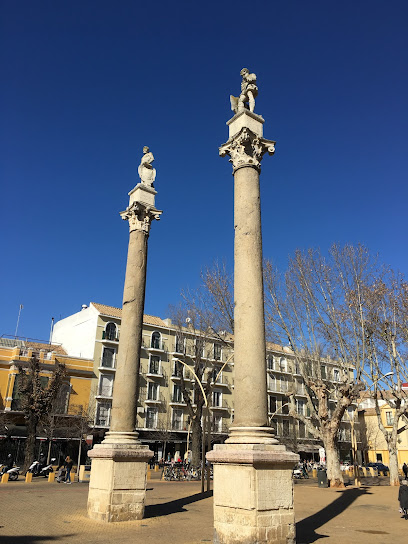
Hermandad de la Macarena
Discover the breathtaking beauty and spiritual significance of Hermandad de la Macarena, a must-visit Catholic church in Seville's historic district.

Palacio de las Dueñas
Discover the enchanting Palacio de las Dueñas in Seville, a historical landmark blending Gothic and Mudejar architecture with rich cultural heritage.
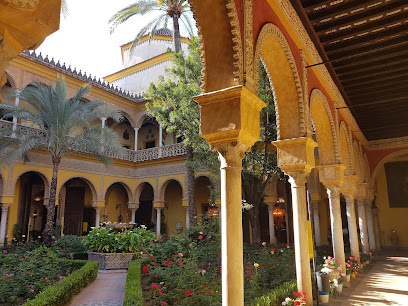
Arco de la Macarena
Explore the Arco de la Macarena, a stunning Baroque archway in Seville, a gateway to rich history and vibrant culture.
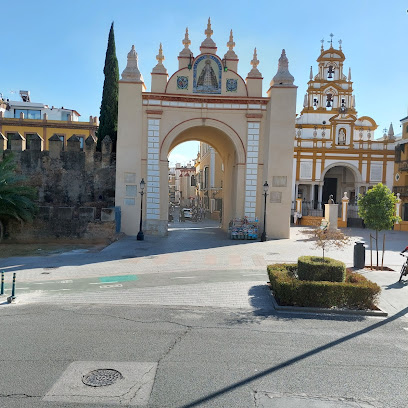
Basílica de la Macarena
Discover the stunning Basilica de la Macarena, a captivating Catholic church in Seville known for its unique architecture and cultural significance.
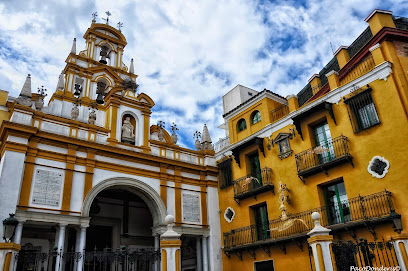
Park of the Perdigones
Explore the lush greenery and artistic charm of the Park of the Perdigones in Seville, a tranquil escape amidst the vibrant city life.
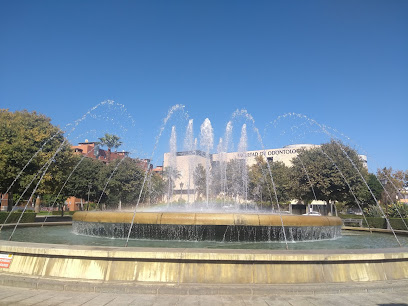
Macarena Walls
Explore the Macarena Walls, an iconic historical landmark in Seville showcasing the city's rich cultural heritage and stunning architectural beauty.
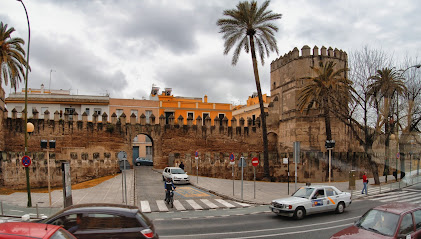
Muralla de la Macarena Garden
Discover a peaceful haven in Seville at Muralla de la Macarena Garden, where history meets natural beauty in a tranquil setting.
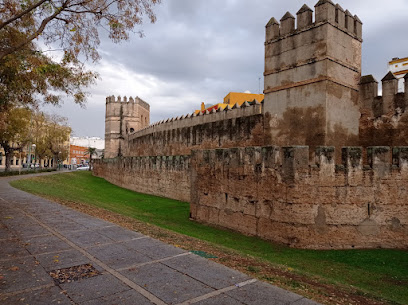
Macarena walls
Discover the historic Macarena Walls in Seville, where ancient architecture meets vibrant cultural experiences in the heart of the city.
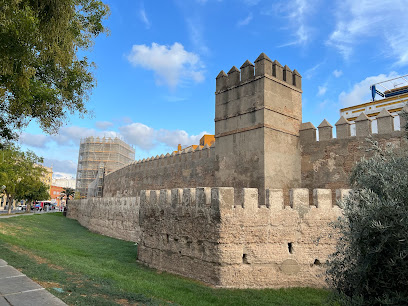
La Torre Blanca (o Torreón de la Tía Tomasa)
Explore La Torre Blanca in Seville, a stunning historical landmark showcasing the city's rich architectural heritage and breathtaking views.
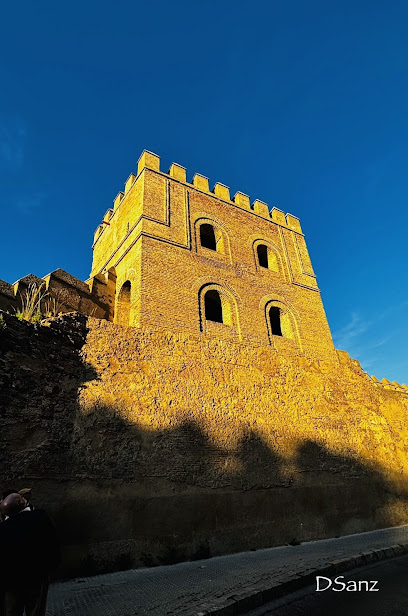
Unmissable attractions to see
Royal Alcázar of Seville
Explore the Royal Alcázar of Seville: a masterpiece of Mudejar architecture and a serene garden retreat in the heart of Spain's vibrant history.
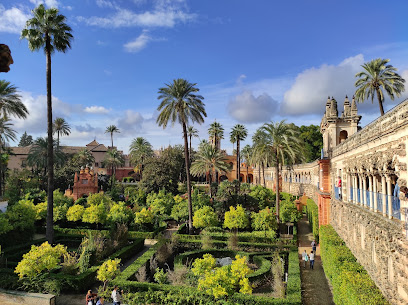
Torre del Oro
Discover the historic Torre del Oro in Seville, a majestic landmark and museum showcasing the city's rich maritime heritage and stunning views.

La Giralda
Discover the breathtaking La Giralda, a UNESCO World Heritage site, where history, architecture, and stunning views of Seville await.
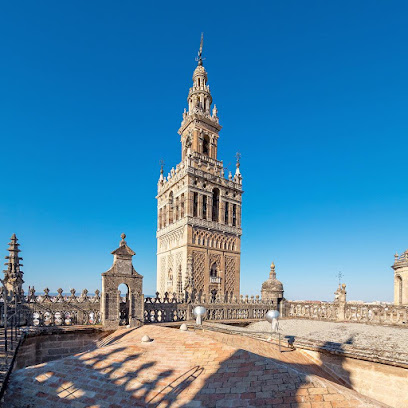
Parque de María Luisa
Discover the enchanting beauty of Parque de María Luisa in Seville, where lush gardens, stunning fountains, and rich history await every visitor.
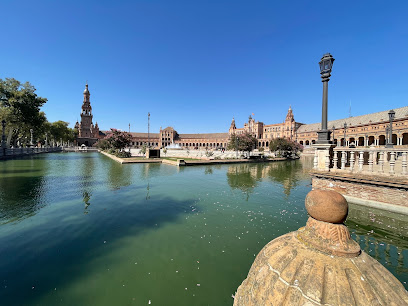
Alameda de Hércules
Discover the vibrant charm of Alameda de Hércules, a historical landmark in Seville filled with culture, lively atmosphere, and scenic beauty.
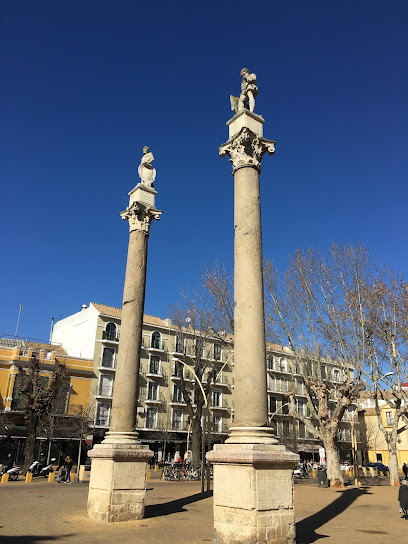
Arco de la Macarena
Discover the Arco de la Macarena, a stunning architectural gateway in Seville, blending history, culture, and breathtaking views.
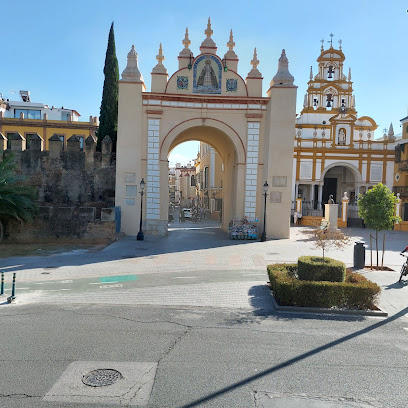
Park of the Perdigones
Discover the serene Park of the Perdigones in Seville, a tranquil oasis featuring beautiful gardens, ponds, and diverse birdlife for a perfect escape.
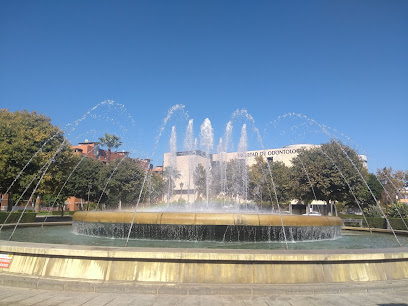
Urbane Kunst
Explore the vibrant contemporary art scene at Urbane Kunst, a must-visit attraction in Seville offering immersive artistic experiences.
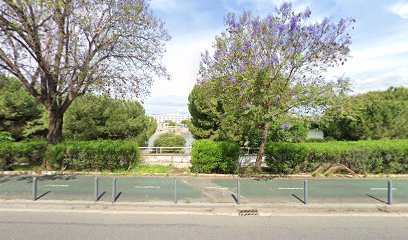
Rompe Moldes
Experience the vibrant culture and rich traditions of Seville at Rompe Moldes, a must-visit tourist attraction in the heart of Casco Antiguo.
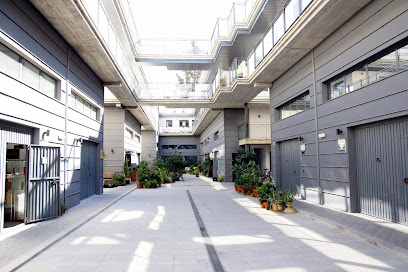
Essential places to dine
Bar El Caminante Andaluz
Experience authentic Spanish tapas at Bar El Caminante Andaluz in Seville—where tradition meets taste in every delightful bite.
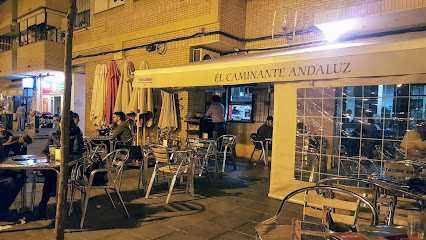
Bar Yebra
Discover authentic Andalusian flavors at Bar Yebra, Seville's beloved tapas bar offering a delightful culinary experience in every bite.
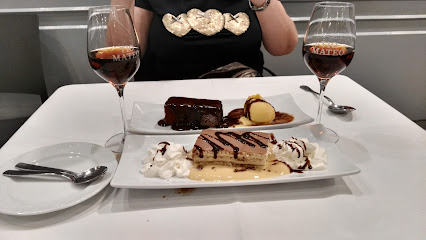
Bar Rincón De Rosita
Discover authentic Andalusian cuisine at Bar Rincón De Rosita in Seville – where every dish tells a story.

Bar Plata
Discover authentic Spanish flavors at Bar Plata, Seville's beloved tapas bar serving traditional dishes in a vibrant atmosphere.
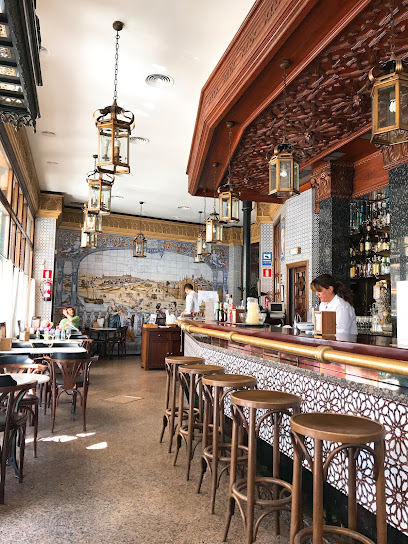
Restaurante Casa sito romero
Experience authentic tapas at Restaurante Casa Sito Romero in Seville – where every bite tells a story of Spanish culinary tradition.
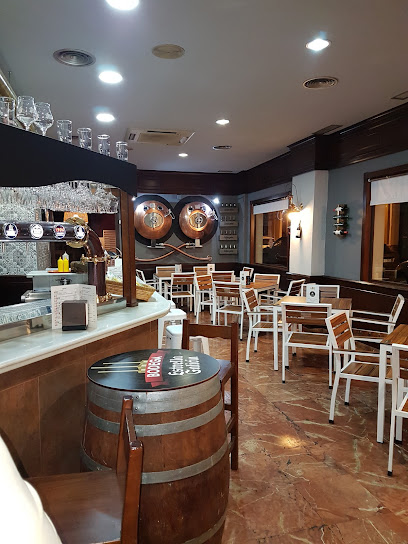
Cafe Bar Macarena
Discover the heart of Sevilla at Café Bar Macarena - where delicious tapas meet vibrant Andalusian culture.
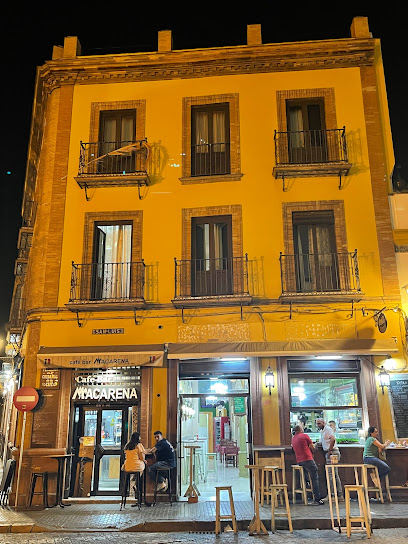
Brasa Casa Olga
Experience authentic Andalusian cuisine at Brasa Casa Olga - a charming tapas bar offering delicious dishes and vibrant atmosphere in Seville.
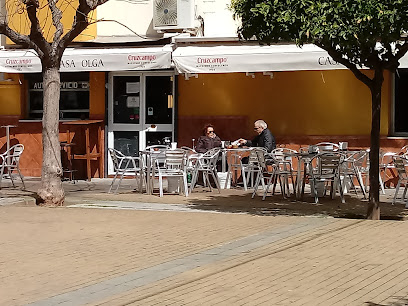
Restaurante LOS ROBER
Discover authentic Spanish cuisine at Restaurante LOS ROBER in Seville - perfect for breakfast, lunch or savoring delicious tapas in a lively setting.
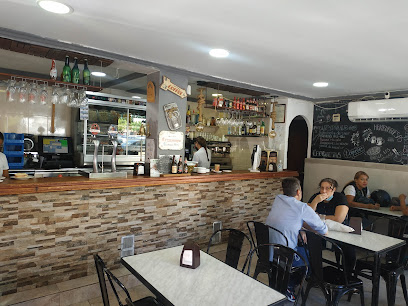
Las Duelas
Discover authentic Spanish grilled cuisine at Las Duelas in Seville – where flavor meets tradition in every bite.
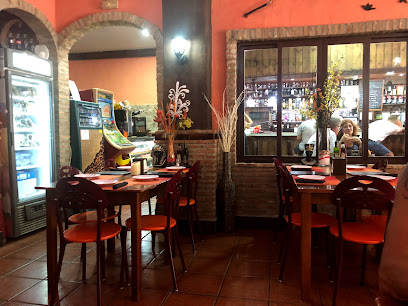
Restaurante Mochika Macarena
Discover authentic Peruvian cuisine at Restaurante Mochika Macarena in Seville—where every bite tells a story.
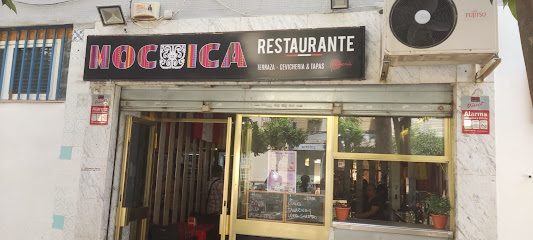
Markets, malls and hidden boutiques
SEXSHOP MACARENA RESOLANA TuDeseo.Net® TIENDA ERÓTICA CALIDAD
Discover Macarena Resolana, the premier adult entertainment store in Seville, offering quality products in a welcoming atmosphere for all visitors.
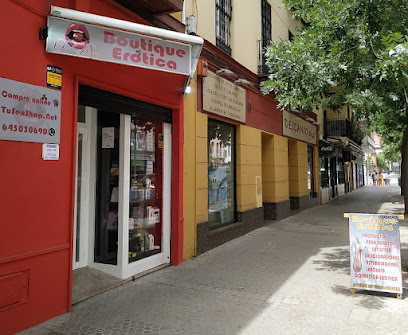
Arenal de Sevilla
Discover unique fashion and local styles at Arenal de Sevilla, your ultimate shopping destination in the heart of Seville's historic district.
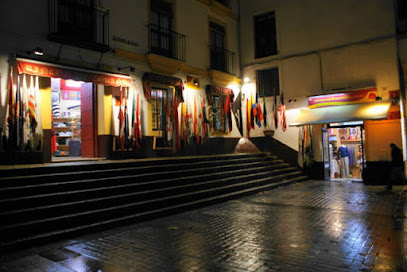
Coco Sevilla
Explore Coco Sevilla for unique home goods and artisanal finds that capture the essence of Seville's vibrant culture and artistry.
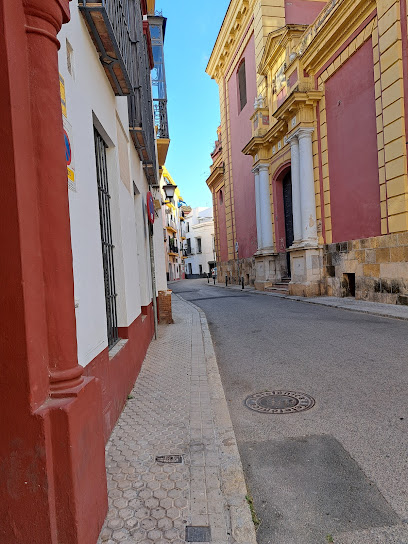
FlamencoDesign sevilla
Explore the vibrant world of flamenco at FlamencoDesign Sevilla, your go-to destination for flamenco clothing and unique gifts.
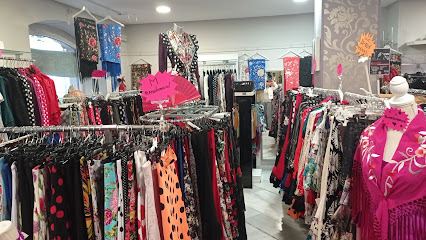
Sympathique Shop
Explore Sympathique Shop in Seville for unique fashion accessories that blend local artistry with modern style.
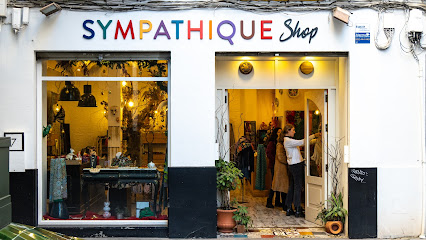
Alheli - Fashion & accessories
Discover Alheli in Seville, where trendy women's fashion meets exquisite accessories, making every shopping experience unforgettable.

La Casa Verde Shop Sevilla
Explore La Casa Verde Shop in Sevilla for unique cosmetics, herbal products, gourmet pasta, and more in a delightful shopping experience.

Encanto de sevilla
Explore Encanto de Sevilla, your destination for unique souvenirs and authentic local crafts in the heart of Seville's Casco Antiguo district.
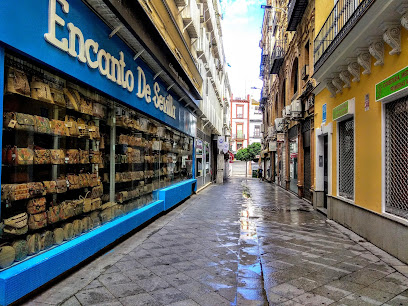
Souvenir Macarena
Explore authentic Spanish souvenirs and immerse yourself in the vibrant culture of Seville at Souvenir Macarena.
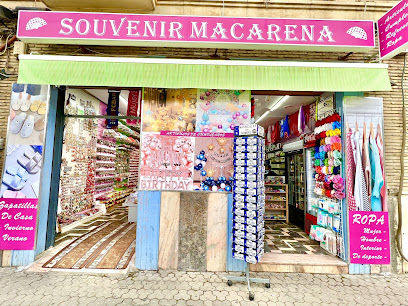
Detalles de alegria y8a
Discover unique gifts and local crafts at Detalles de Alegría, a hidden gem in Seville's Mercado Villegas.
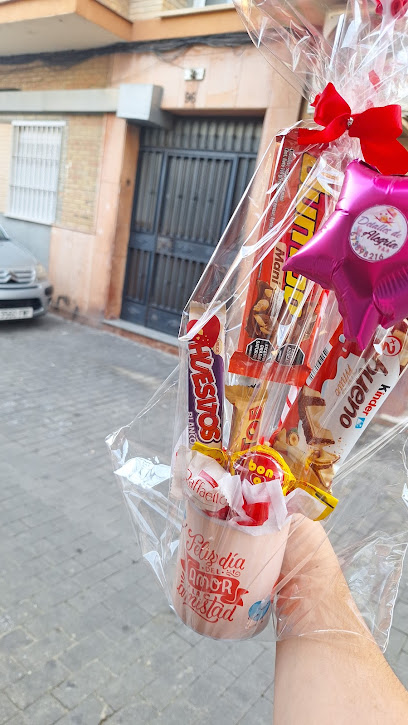
Essential bars & hidden hideouts
Bar El Caminante Andaluz
Experience the essence of Andalusian cuisine at Bar El Caminante Andaluz, a tapas bar in Seville with authentic flavors and a vibrant atmosphere.
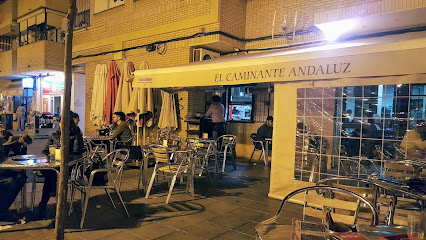
Bar Yebra
Experience authentic Spanish tapas at Bar Yebra in Seville, where vibrant flavors and a welcoming atmosphere await every visitor.
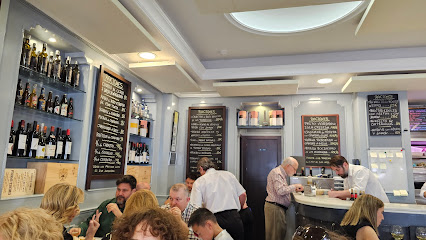
Bar Plata
Experience the heart of Spanish cuisine at Bar Plata in Seville, where traditional tapas meet a vibrant atmosphere and warm hospitality.
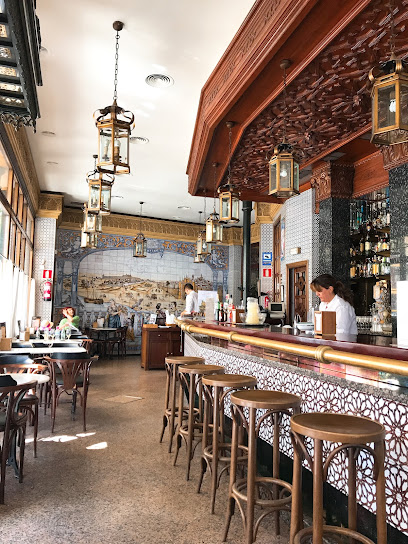
Bar Koala
Savor the rich flavors of Spain at Bar Koala, where every bite of tapas tells a story of authentic Spanish cuisine in the heart of Seville.
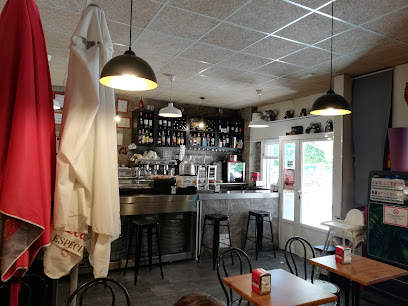
Bar Casa Julián
Discover the authentic flavors of Seville at Bar Casa Julián, where tapas and local wines create an unforgettable experience.
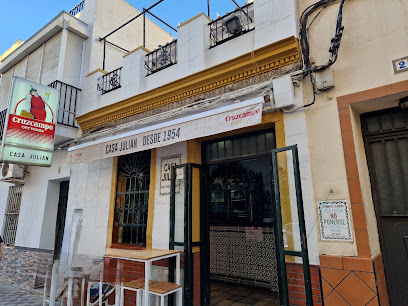
La Bodega
Savor the essence of Andalusian cuisine at La Bodega, a lively tapas bar in Seville offering a delightful array of traditional Spanish dishes.
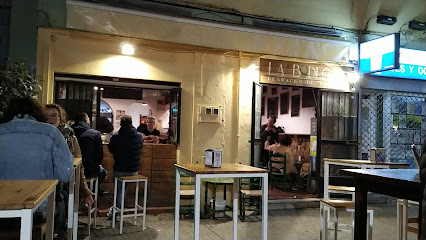
Cafe Bar Macarena
Savor authentic tapas and delectable breakfast options in the heart of Seville's Casco Antiguo at Cafe Bar Macarena.
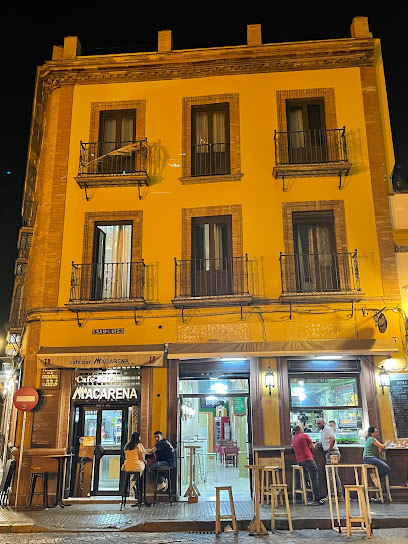
Bar Las Peñas
Discover the authentic taste of Seville at Bar Las Peñas, where delicious grilled dishes and a friendly atmosphere await every visitor.
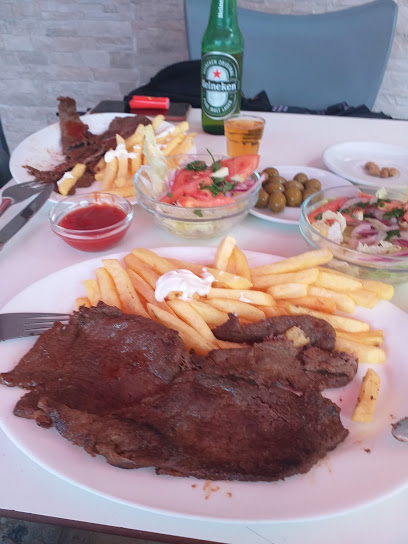
Taberna La Viña-Gilsan (BarBarato-Bar)
Discover the charm of Seville at Taberna La Viña-Gilsan, where traditional tapas and local wines create an unforgettable Andalusian experience.
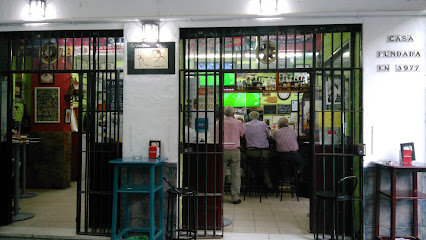
Mercado Provenzal Macarena
Experience vibrant nightlife and authentic Spanish cuisine at Mercado Provenzal Macarena, a must-visit pub in the heart of Seville.
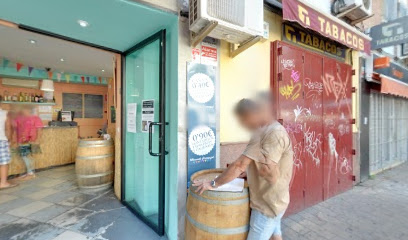
Local Phrases
-
- HelloHola
[oh-lah] - GoodbyeAdiós
[ah-dee-ohs] - YesSí
[see] - NoNo
[noh] - Please/You're welcomePor favor/De nada
[por fah-bor/deh nah-dah] - Thank youGracias
[grah-see-ahs] - Excuse me/SorryPerdón/Lo siento
[pair-dohn/loh see-ehn-toh] - How are you?¿Cómo estás?
[koh-moh eh-stahs] - Fine. And you?Bien. ¿Y tú?
[byen. ee too] - Do you speak English?¿Hablas inglés?
[ah-blahs een-glehs] - I don't understandNo entiendo
[noh ehn-tee-ehn-doh]
- HelloHola
-
- I'd like to see the menu, pleaseMe gustaría ver la carta, por favor
[meh goos-tah-ree-ah ver lah kahr-tah por fah-bor] - I don't eat meatNo como carne
[noh koh-moh kahr-neh] - Cheers!¡Salud!
[sah-lood] - I would like to pay, pleaseMe gustaría pagar, por favor
[meh goos-tah-ree-ah pah-gar por fah-bor]
- I'd like to see the menu, pleaseMe gustaría ver la carta, por favor
-
- Help!¡Ayuda!
[ah-yoo-dah] - Go away!¡Vete!
[veh-teh] - Call the Police!¡Llama a la policía!
[yah-mah ah lah poh-lee-see-ah] - Call a doctor!¡Llama a un médico!
[yah-mah ah oon meh-dee-koh] - I'm lostEstoy perdido/a
[ehs-toy pair-dee-doh/ah] - I'm illEstoy enfermo/a
[ehs-toy ehn-fehr-moh/ah]
- Help!¡Ayuda!
-
- I'd like to buy...Me gustaría comprar...
[meh goos-tah-ree-ah kohm-prahr] - I'm just lookingSolo estoy mirando
[soh-loh eh-stoy mee-rahn-doh] - How much is it?¿Cuánto cuesta?
[kwan-toh kwehs-tah] - That's too expensiveEsto es demasiado caro
[ehs-toh es deh-mah-syah-doh kah-ro] - Can you lower the price?¿Puedes bajar el precio?
[pweh-dehs bah-har el pree-see-oh]
- I'd like to buy...Me gustaría comprar...
-
- What time is it?¿Qué hora es?
[keh oh-rah ehs] - It's one o'clockEs la una en punto
[ehs lah oo-nah ehn poon-toh] - Half past (10)Las diez y media
[lahs dyehs ee meh-dee-ah] - MorningMañana
[mah-nyah-nah] - AfternoonTarde
[tahr-deh] - EveningNoche
[noh-cheh] - YesterdayAyer
[ah-yehr] - TodayHoy
[oy] - TomorrowMañana
[mah-nyah-nah] - 1Uno
[oo-noh] - 2Dos
[dohs] - 3Tres
[trehs] - 4Cuatro
[kwah-troh] - 5Cinco
[theen-koh] - 6Seis
[says] - 7Siete
[syeh-teh] - 8Ocho
[oh-choh] - 9Nueve
[nweh-veh] - 10Diez
[dyehs]
- What time is it?¿Qué hora es?
-
- Where's a/the...?¿Dónde está...?
[dohn-deh ehs-tah] - What's the address?¿Cuál es la dirección?
[kwal ehs lah dee-rehk-syohn] - Can you show me (on the map)?¿Puedes enseñarme (en el mapa)?
[pweh-dehs ehn-sehn-yar-meh ehn el mah-pah] - When's the next (bus)?¿Cuándo es el próximo (autobús)?
[kwan-doh es el proh-ksee-moh ow-toh-boos] - A ticket (to ....)Un billete (a ....)
[oon bee-yeh-teh ah]
- Where's a/the...?¿Dónde está...?
History of Macarena
-
Macarena's history dates back to the Roman period, where it was known as a settlement on the outskirts of the ancient city of Hispalis. The region's fertile land and strategic location made it an attractive area for agriculture and trade. Archaeological findings, including Roman pottery and architecture, indicate the area's significance during this time.
-
During the Islamic period, from the 8th to the 13th centuries, Macarena became part of the flourishing city of Seville, known as Ishbiliya. The Moors significantly influenced the architecture, culture, and agriculture of the area. The construction of irrigation systems helped enhance agricultural productivity, and many of the architectural styles from this period can still be seen in the neighbourhood today.
-
In the 16th century, Macarena saw the establishment of important religious confraternities, particularly the Hermandad de la Macarena, founded in 1936. This brotherhood plays a vital role in the Semana Santa (Holy Week) celebrations in Seville, with its iconic Virgin of Macarena, a symbol of the neighbourhood's deep religious devotion and cultural significance.
-
The early 20th century marked significant urban development in Macarena as industrialization spread throughout Seville. The neighbourhood witnessed the construction of new housing, schools, and cultural institutions, reflecting the changing demographic and economic landscape of the city. This period also saw the rise of the local artisan community, contributing to the unique cultural fabric of Macarena.
-
In recent decades, Macarena has undergone a cultural revival, embracing its rich history while also adapting to contemporary influences. The neighbourhood now hosts numerous cultural events and festivals that celebrate its heritage. The restoration of historic buildings and the promotion of local artisans has attracted both residents and tourists, making Macarena a vibrant cultural hub within Seville.
Macarena Essentials
-
Macarena is centrally located in Seville and is easily accessible from other neighborhoods. From the city center (Centro), you can take bus lines 1, 3, 5, or 21, which will get you to various points in Macarena. The nearest train station is Santa Justa, from which you can take a taxi or a short bus ride. If you are arriving from Seville Airport, the airport bus (EA) will take you to the city center, where you can transfer to a local bus heading to Macarena.
-
Macarena is a walkable neighborhood with many attractions close together. Public buses operate frequently and connect different parts of the area. For a more local experience, consider renting a bicycle through Seville's bike-sharing system, Sevici, allowing you to explore the wider city at your own pace. Taxis are also available throughout the neighborhood and can be hailed on the street or booked through a mobile app.
-
Macarena is generally safe for tourists, but as in any urban area, it's wise to stay alert. Avoid poorly lit streets at night, especially around the outskirts. While the neighborhood does not have specific high-crime areas targeting tourists, petty theft can occur in crowded places, so keep an eye on your belongings. The area around the Macarena Basilica can get crowded during religious events, so be cautious.
-
In case of an emergency, dial 112 for police, fire, or medical assistance. The nearest hospital is Hospital Universitario Virgen del Rocío. For minor health issues, there are several pharmacies in Macarena where you can find over-the-counter medications. It's recommended to have travel insurance that covers medical emergencies.
-
Fashion: Do wear comfortable, modest clothing, especially if visiting religious sites. Don't wear beachwear outside of the beach. Religion: Do respect local customs, especially during religious events. Always cover your shoulders and knees when entering churches. Public Transport: Do offer your seat to elderly passengers. Don't eat or drink on public transport. Greetings: Do greet with a friendly 'Hola' or a handshake. Don't be overly informal with unfamiliar acquaintances. Eating & Drinking: Do try tapas and local dishes. Don't rush your meal; dining is a leisurely experience in Spain.
-
To experience Macarena like a local, visit the Mercado de la Feria, a bustling market where you can find fresh produce and local delicacies. Engage with local vendors, many of whom are happy to share recipes or cooking tips. Attend the local festivals, particularly the Feria de la Macarena, to immerse yourself in cultural traditions. Don't miss out on the charming parks, such as Parque de la Macarena, where locals relax and socialize.
Nearby Cities to Macarena
-
Things To Do in Huelva
-
Things To Do in Cádiz
-
Things To Do in Ronda
-
Things To Do in Casemates Square
-
Things To Do in Moorish Castle
-
Things To Do in Gibraltar
-
Things To Do in Main Street
-
Things To Do in Catalan Bay
-
Things To Do in Queensway Quay Marina
-
Things To Do in Alameda Botanic Gardens
-
Things To Do in St. Michael's Cave
-
Things To Do in Gorham's Cave Complex
-
Things To Do in Europa Point
-
Things To Do in Málaga
-
Things To Do in Faro








